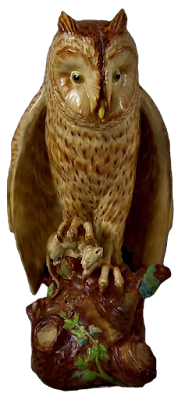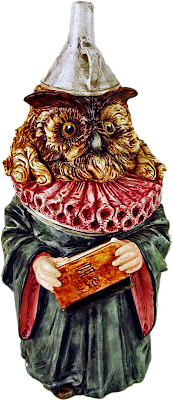Most people only know David Smith as one of the original partners of Griffen, Smith & Hill. But there was more to the life of David Smith than the partnership that made him famous. His was a story typical of the hundreds of potters who left the poverty of the Staffordshire potteries to emigrate to the United States to make a better life for their families.
David Smith was born in Fenton, England in November of 1839. The eldest of ten children of potter Moses Smith, he went into the pottery business as an apprentice in 1857 at the age of seventeen. Two years later he married Alice Jones, two years his elder. Within three months his first daughter was born, followed 18 months later by a second daughter.
In 1868, Smith moved his family to Nova Scotia, Canada to take over as manager of the Scotia Pottery. The following year he emigrated to the United States to be part of the burgeoning pottery business around Trenton, New Jersey. In 1871 he moved his pregnant wife and his family to Phoenixville, Pennsylvania to be foreman of the Phoenix Pottery.
The Phoenix Pottery then went through successive changes of ownership. When John Griffen purchased the pottery in 1879 for his two sons George and Henry, David Smith and William Hill—who Smith had known from Trenton—joined as partners. It was then renamed the Etruscan Works. After the departure of Hill, with Smith as manager, the company produced all of the wonderful majolica we associate with it today.
In 1889, Smith left the pottery to set up the Feldspar Works. Three years later his wife Alice died. In 1893 Smith sold his interest in the Works and took a one year commission offered by W.A. Weller in Zanesville, Ohio to aid in the formulation of glazes for the new Weller Pottery faience line, later renamed Louwelsa. After completion of the contract he returned to Phoenixville to manage the newly reorganized Phoenix Pottery, now called the Chester Pottery. His tenure didn’t last long however. One month after returning, Smith took ill and retired from the pottery business. He remained an advisor to the pottery until his death at the age of 56 in 1895.
Smith’s contribution to both the Etruscan Works and the Weller pottery was largely his strength in the formulation of majolica glazes. He was known to spend hours experimenting, creating and perfecting glazes for the potteries. Unfortunately, the toxic lead content of these glazes probably resulted in his early death. His glaze books, in his handwriting, survive today thanks to his son-in-law who saved them after Smith’s passing.
He is buried in Morris Cemetery next to his wife, within blocks of the pottery which bought him ceramic immortality.
For more information about David Smith as well as the other three partners of the Etruscan Works, you can find my book on Etruscan Majolica at Amazon as well as at fine booksellers everywhere.





























































